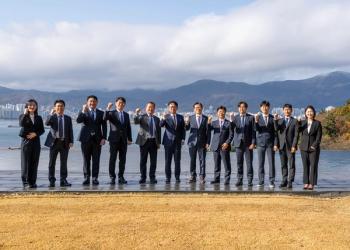
WTUI 2024 Showcases Aeroderivative Turbine Trends
Day one at WTUI 2024 in Palm Springs, CA focused on gas turbine sales and aeroderivative orders.
The 33rd annual Western Turbine Users Inc. (WTUI) conference kicked off this week in Palm Springs, CA. Over the course of the first day, attendees were served up a series of briefings from GE Vernova as well as authorized service providers such as IHI Power Services Corp., TCP, and MTU Aero Engines. There were also a series of breakout sessions for LM2500, LM5000, LM6000, and LMS 100 users. During these breakouts, users go into great detail about the challenges they face in operating their machines and hear solutions and workarounds from their peers.
But the highlight of the first day was a presentation on the latest trends impacting gas turbines and especially aeroderivatives. Tony Brough, an analyst at Dora Partners, revealed that overall gas turbine orders (in units) were up 3%. However, total MWs ordered were down 12.6% compared to 2022. This slight downturn was anticipated due to the cyclic nature of the market for large turbines.
Aeroderivative Orders
In the aeroderivative space, GE Vernova and Baker Hughes continue to maintain their dominance of market share with the LM2500+ being the star performer. A total of 83 units were ordered in 2023 compared to 81 in 2022.
“The LM2500+ has been one of the most popular models in the world for the last 25 years,” said Brough. “Almost 50% of all aeroderivative sales over the past five years have been LM2500+s.”
Other GE aeroderivatives fared less well. The LM6000 only managed about five orders in 2023, though Brough noted that 2024 looks like a better year for that machine. The LM9000 only managed two orders.
Strong sales of LM2500+ turbines are attracting competition from small industrial gas turbines and reciprocating engines. Brough named Solar Turbines as a particularly strong rival. It managed about 100 unit sales in 2023 with its Solar Titan 250. And it has a new offering, the Solar Titan 350 model that is aimed squarely at capturing more of the LM2500+ pie.
Bright Future for Gas Turbines
With so much attention on renewables, emissions reduction, hydrogen, and net zero, some wonder what the future holds for gas turbines. Brough strongly believes the market will remain healthy for many years to come.
“Gas turbines are not going away,” he said. “Ten years from now, they will still be going strong.”
Brough backed this up with numbers. He expects $137 billion to be spent on new turbines and turbine packages (it does not include auxiliary systems, heat recovery steam generators, and other related equipment) over the next 10 years. Of that $137 billion, $22.3 billion will be spent on aeroderivatives, and GE/Baker Hughes will gain almost $20 billion of that.
In addition, aftermarket spending on gas turbines will amount to $261 billion over the next decade—the aeroderivative aftermarket will gain $31.5 billion ($23 billion of that will be spent on GE/Baker Hughes machines).
Newsletter
Power your knowledge with the latest in turbine technology, engineering advances, and energy solutions—subscribe to Turbomachinery International today.





